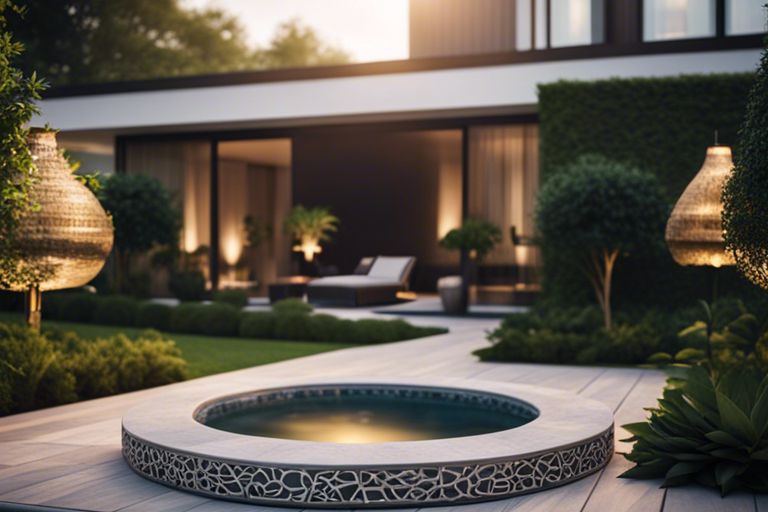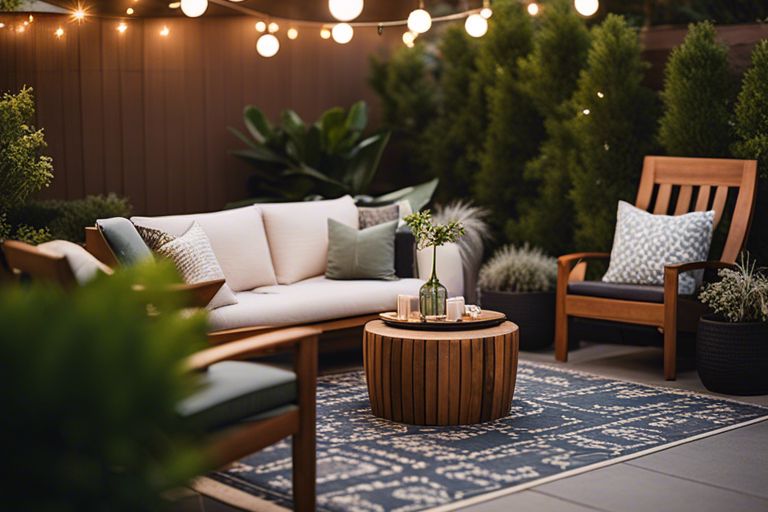Are you looking to elevate the look and functionality of your outdoor space? Consider hardscaping, a transformative approach to landscaping that incorporates durable, practical features to complement the natural elements of your yard. From patios and walkways to retaining walls and fire pits, hardscaping offers a wide range of options to enhance the beauty and usability of your property. In this blog post, we will explore the benefits of hardscaping and provide inspiration for incorporating functional and aesthetic features into your landscape design. Whether you are aiming to increase property value, create more outdoor living space, or simply improve the overall look of your home, hardscaping can be a game-changing solution.
Fundamental Elements of Hardscaping
Your hardscaping design should include key fundamental elements to achieve a balanced and functional landscape. These elements form the backbone of your outdoor living space, providing structure and organization to your overall design. Whether you are creating a new hardscape or enhancing an existing one, considering these fundamental elements will help you achieve a visually appealing and cohesive outdoor environment.
Materials Used in Hardscaping
When it comes to hardscaping, the materials you choose play a crucial role in the overall look and feel of your design. From natural stone and brick to concrete and wood, each material offers unique advantages and characteristics. Consider the climate and environmental factors in your area when selecting materials for your hardscaping project. It’s important to choose durable materials that can withstand the elements and require minimal maintenance. Additionally, think about how the materials will complement the existing features of your landscape and architecture.
Design Principles for Hardscaping
Effective hardscaping design involves understanding and applying key principles to create visually appealing and functional outdoor spaces. Balance, proportion, and unity are essential design principles that can guide you in creating a harmonious hardscape. Balance ensures that visual weight is distributed evenly, while proportion relates to the size and scale of hardscape elements in relation to the overall landscape. Unity ties the various elements of the hardscape together, creating a cohesive and pleasing visual composition. By incorporating these principles into your hardscaping design, you can achieve a well-planned and aesthetically pleasing outdoor space.
Hardscape Features
One of the most important aspects of hardscaping is the addition of functional and aesthetic features to your outdoor space. These features not only enhance the beauty of your landscape but also serve a practical purpose, adding value and usability to your property.
Patios and Decks
If you want to create an outdoor living space that is perfect for entertaining or simply relaxing, a patio or deck is an essential hardscaping feature. Patios and decks provide a level surface for outdoor furniture, grill, and other amenities, making it a comfortable and inviting space for you and your guests. They also serve as a transition area between your indoor and outdoor living spaces, creating a seamless flow between the two. Whether you opt for a traditional brick patio or a modern composite deck, this hardscaping feature is sure to add both functionality and beauty to your landscape.
Walkways and Paths
Walkways and paths not only guide you and your guests through your landscape but also add structure and visual interest to your outdoor space. Whether you choose natural stone, pavers, or gravel, these hardscape features can help define different areas of your yard and provide a safe and sturdy surface to walk on. In addition to their practicality, walkways and paths can also enhance the overall aesthetic appeal of your landscape by adding a sense of order and design. By incorporating these features into your hardscaping, you can create a welcoming and well-organized outdoor environment.

Incorporating Hardscaping into Your Garden
Lastly, when it comes to incorporating hardscaping into your garden, it’s important to consider the layout and design of your outdoor space. Hardscaping can be used to create defined areas for different purposes, such as outdoor dining or relaxation zones. It’s also important to consider the existing natural features of your garden, such as trees and shrubs, and how hardscaping can complement and enhance these elements.
Integration with Softscaping
When integrating hardscaping with softscaping, it’s important to consider how the two can work together to create a harmonious and balanced outdoor space. Softscaping refers to the living elements of your garden, such as plants, flowers, and trees, while hardscaping refers to the non-living elements such as pathways, patios, and retaining walls. By strategically placing hardscaping elements throughout your garden, you can create visual interest and focal points that complement the softscaping elements.
Water Features and Fire Pits
Adding water features and fire pits to your garden can create a sense of tranquility and relaxation. Water features, such as fountains, ponds, or waterfalls, can add a soothing element to your outdoor space, while fire pits can provide warmth and a cozy atmosphere for outdoor gatherings. These features can also serve as focal points in your garden, creating a sense of visual interest and enhancing the overall aesthetic appeal of your outdoor space.
Maintenance and Sustainability
After you have invested in hardscaping for your landscape, it is important to consider the maintenance and sustainability of these features. Proper care will ensure that your hardscaping remains functional and aesthetically pleasing for years to come.
Long-term Care of Hardscape Elements
When it comes to maintaining hardscape elements such as patios, walkways, and retaining walls, regular upkeep is essential. This includes cleaning, sealing, and repairing any damage that may occur over time. Regular cleaning to remove dirt, debris, and stains will prevent the build-up of grime and keep your hardscaping looking fresh. Sealing your hardscape features can help protect them from the elements and prolong their lifespan. Additionally, addressing any cracks or damage as soon as they arise will prevent further deterioration and costly repairs in the future.
Eco-Friendly Hardscaping Options
When designing or updating your hardscaping, considering eco-friendly options can contribute to the sustainability of your landscape. Using permeable materials for driveways and walkways allows water to penetrate the surface, reducing runoff and helping to recharge groundwater. Incorporating drought-resistant plants and utilizing natural materials such as stone or wood for hardscaping can also minimize the impact on the environment.

Conclusively, Hardscaping – Enhancing Your Landscape with Functional and Aesthetic Features
So, as you can see, hardscaping can truly transform your outdoor living space, adding both practical and aesthetic value to your landscape. Whether it’s creating a beautiful patio for entertaining guests or installing a functional retaining wall to prevent erosion, the possibilities are endless. By incorporating features like walkways, fire pits, and water features, you can create a space that not only looks great but also serves a purpose. So, if you’re looking to enhance your outdoor environment, consider hardscaping to take your landscape to the next level.
FAQ
Q: What is hardscaping?
A: Hardscaping refers to the non-living elements in your landscape design, such as pathways, patios, walls, and other structures that provide both aesthetic appeal and functionality.
Q: What are some common materials used in hardscaping?
A: Common materials used in hardscaping include concrete, bricks, pavers, stones, wood, and metal. Each material offers unique advantages in terms of durability, appearance, and maintenance requirements.
Q: How does hardscaping enhance a landscape?
A: Hardscaping enhances a landscape in several ways. It creates a defined space for outdoor living and entertaining, adds structure and organization to the design, and complements the natural elements of the landscape, such as plants and trees.
Q: What are some popular hardscaping features?
A: Popular hardscaping features include retaining walls, fire pits, water features, outdoor kitchens, and pergolas. These features not only enhance the aesthetic appeal of the landscape but also provide additional functionality for outdoor activities.
Q: How can I incorporate hardscaping into my landscape design?
A: To incorporate hardscaping into your landscape design, start by assessing your outdoor space and identifying areas that could benefit from functional or aesthetic enhancements. Consider the balance between hardscape and softscape elements, and work with a professional hardscaping contractor to bring your vision to life. Remember to consider the long-term maintenance and sustainability of your hardscaping features.
Visits: 12




